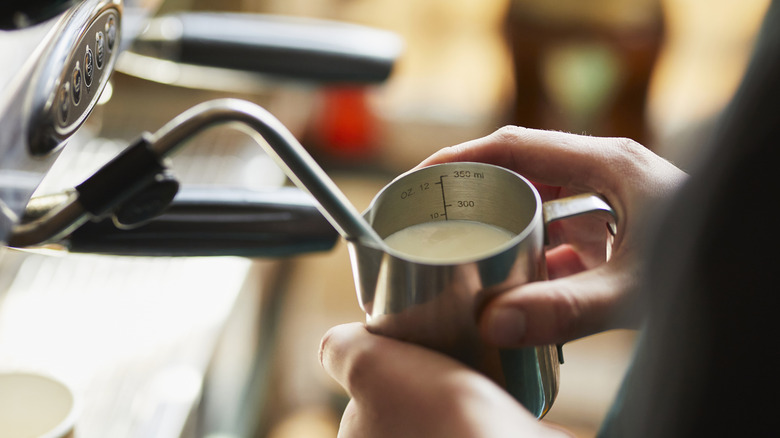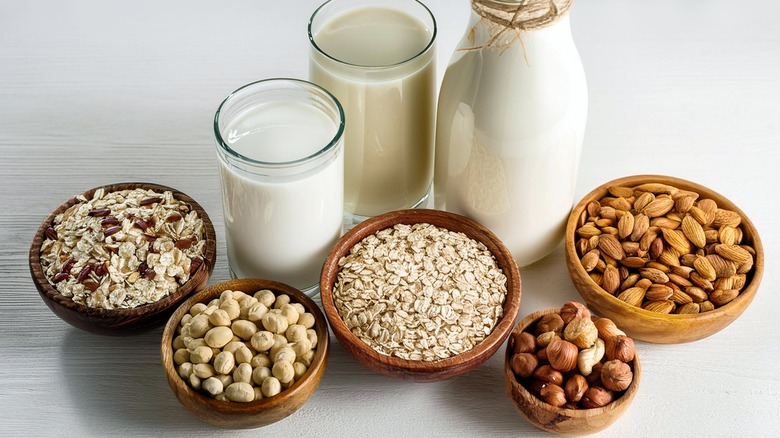Can You Froth Non-Dairy Milks For Lattes And Cappuccinos?
Non-dairy milks are becoming ubiquitous, with options like oat, rice, and almond milk readily available in stores alongside classic soy milk. But if you're the owner of an espresso machine, you may be wondering whether they froth well with the steam wand, so you can make milky coffees like cappuccinos and lattes. The short answer is yes, but the results vary across the types of milk, as well as different brands within these.
There's some complex science to how milk froths, but the very short version is that you need the right balance of proteins and fats. Proteins capture air bubbles, making a stable, structured foam, while fat adds a creamy taste. This is why skim milks tend to create a fluffy foam, since they have a suitable amount of protein but less fat, so the structure is there without the velvety creaminess of fat.
Generally speaking, non-dairy milks can't handle as much heat as dairy, so you should steam them less, or else run the risk of them curdling from high heat. As a general rule, non-dairy milks with emulsifiers in them (canola oil or xanthan gum are common) are best, as these prevent the milk from separating into fat and water (after all, milk is essentially just fat emulsified into water). So-called "barista blends" of non-dairy milks usually include these emulsifiers alongside extra fat — as a result, they're generally the best option for steaming non-dairy milk.
Which types of non-dairy milks work best?
Not all non-dairy milks are made equal, with varying levels of fat and protein, not to mention flavor profiles. Oat milk is usually a good bet, as it's sufficiently rich and captures the air from steaming well into a nice microfoam. Soy milk foams well, but can be finicky: It'll curdle above about 130 degrees Fahrenheit, so it's best to start with cold milk; it also works better with less-acidic coffee, as acidic coffee can make it separate. Almond milk is also in a similar boat, requiring similarly low temperatures; it also doesn't always have enough protein to create a smooth microfoam.
Another nut milk you might encounter is cashew. It's not great for foaming: It's watery and separates easily, and if you do make foam, it'll be unpleasantly thin. Also becoming more popular is hemp milk — it's also not ideal, as it doesn't form strong bubbles, and curdles easily. Plus, some people dislike the vegetable-ish flavor it can bring.
There are bad choices, too. Coconut milk doesn't have enough protein to steam well, and if you do manage to make a decent foam, it breaks down quickly. Rice milk is also a bad choice, as it lacks enough protein and fat to steam well.
There are a lot of non-dairy milk brands on the market, so it's tough to make any definitive recommendations when it comes to brands. Instead, just remember to go for the barista blend for optimal foam.

